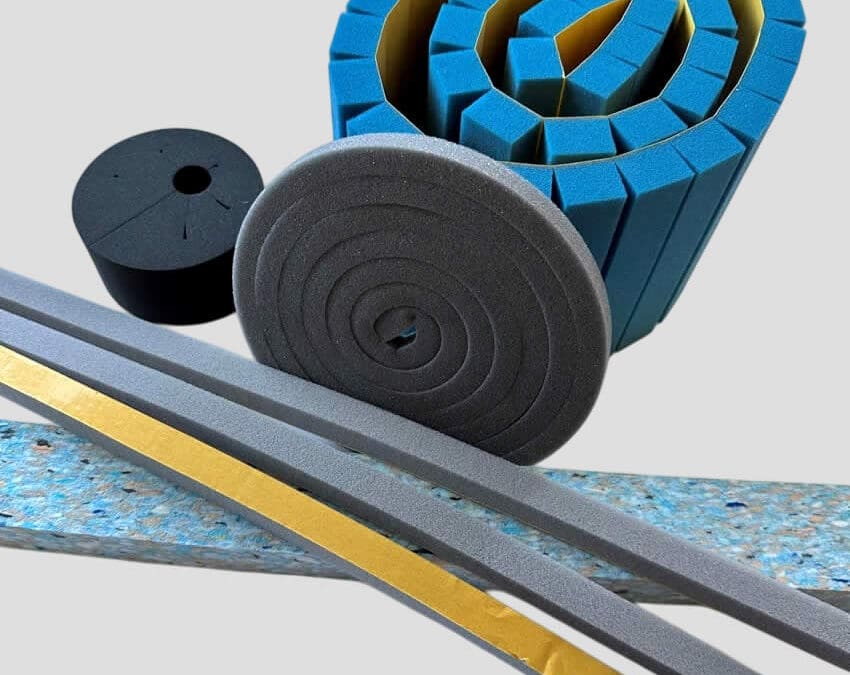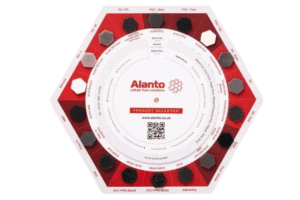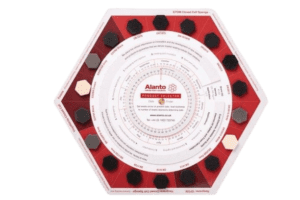Material Innovation That Delivers
At Alanto, we’ve worked with engineers and product designers across sectors who need materials that can perform under pressure – literally. When strength, weight, and insulation all matter, high density polyurethane foam stands out.
In this guide, we explain what rigid PU foam is, how manufacturers produce it, where industries apply it, and why sectors—from automotive and construction to marine and defence—choose it as a go-to solution.
Whether you’re designing structural support, developing energy-efficient insulation, or selecting impact-absorbing materials, we’ve tailored this guide to help you choose with confidence.
1. What Is High-Density Polyurethane Foam?
High-density PU foam is a closed-cell, rigid foam made by reacting polyol and isocyanate in a controlled process. The result is a lightweight, robust material with exceptional compressive strength, thermal resistance, and dimensional stability.
It differs from soft, flexible polyurethane foam in both structure and application. Engineers use high-density foam for structure, insulation, and load-bearing capacity, while they choose standard foams for cushioning.
2. How Is High-Density PU Foam Manufactured?
At Alanto, we work with specialist foam producers to supply and convert high-density polyurethane to exacting specifications. The foam is typically created through a controlled exothermic reaction between:
- Polyol (a polyether or polyester base)
- Isocyanate (commonly MDI)
Manufacturers add catalysts, surfactants, and blowing agents to fine-tune the final properties—rigidity, density, thermal resistance, and expansion rate.
Rigid PU foam is poured or injected into moulds, blocks, or panels, then cut or CNC-machined to shape using precision tooling.
3. Key Properties of High-Density Polyurethane Foam
| Property | Typical Performance |
|---|---|
| Density | 150–400 kg/m³ |
| Thermal Conductivity | 0.02–0.03 W/m·K |
| Compressive Strength | 200–800 kPa |
| Water Absorption | Low (closed-cell structure) |
| Dimensional Stability | Excellent |
| Flame Resistance | Available in FR grades |
| Machinability | High – suitable for routing and shaping |
These characteristics make high density polyurethane foam one of the most versatile materials in industrial and design applications.
4. Applications of Rigid PU Foam Across Industries
1. Structural Support
Due to its compressive strength and lightweight nature, structural foam is often used in:
- Vehicle panels
- Load-bearing inserts
- Marine bulkheads
- Aerospace interiors
It offers high rigidity without significantly increasing weight – critical for mobile and airborne platforms.
2. Thermal Insulation
As a leading polyurethane insulation material, it provides some of the best thermal performance in industrial foam types.
Common uses include:
- Refrigerated units and freezers.
- Building panels and wall cavities.
- Pipe lagging and HVAC systems.
Its low thermal conductivity ensures energy efficiency and cost savings over time.
3. Impact Absorption
High-density PU can be used for:
- Packaging for sensitive equipment.
- Helmet liners.
- Vibration dampening in machinery.
- Protective inserts in defence applications.
It absorbs energy on impact and returns to shape, making it ideal for absorbing and managing kinetic force.
4. Tooling and Pattern Making
Engineers and fabricators use rigid PU foam for:
- Rapid prototyping
- Model building
- Mould inserts
- Master patterns for composites
Its machinability and dimensional stability make it easy to work with – even on CNC routers or lathes.
5. Comparing Industrial Foam Types: Where PU Stands Out
| Foam Type | Density Range | Main Strength | Main Use Case |
|---|---|---|---|
| Polyethylene (PE) | 25–200 kg/m³ | Water resistance | Packaging, seals |
| Neoprene | 40–120 kg/m³ | Oil and chemical resistance | Gaskets, outdoor use |
| EPDM | 40-130 kg/m³ | UV/weather resistance | Automotive, HVAC |
| PU (High Density) | 150-400 kg/m³ | Thermal & structural performance | Insulation, support, tooling |
Rigid PU foam sits at the top for applications demanding insulation and structural integrity. It’s also available in fire-retardant variants for high-risk environments.
6. Why Designers Choose Alanto for Polyurethane Foam
As experienced foam converters, we support engineers with:
- Bespoke block or sheet supply.
- CNC cutting and shaping.
- Laminating, routing, and bonding.
- Consultation on densities, grades and flame resistance.
We balance performance, compliance, and cost for you—and deliver every part to match your exact specifications.
We also understand the importance of sustainability. Where possible, we supply low-emission, eco-optimised foams that reduce VOCs and improve indoor air quality.
Alanto’s Expertise: Precision Foam Conversion Since Day One
We are not just foam suppliers – we are problem solvers. Our in-house foam conversion services give you a material that’s engineered for your application – not the other way around.
Clients across the UK and Europe choose us for:
- Rapid prototyping.
- Batch or volume supply.
- Quality assurance to ISO 9001:2015.
- UK-based cutting, laminating, and fabrication.
We know your project timelines matter. That’s why we offer responsive lead times and clear communication from design to delivery.
FAQs
Is high-density PU foam the same as structural foam?
They’re often used interchangeably. High-density PU foam qualifies as structural foam due to its strength, rigidity, and resistance to compression.
Can rigid PU foam be machined?
Yes. You can cut, drill, shape, or route it using standard tools or a CNC system.s. It holds its shape and doesn’t crumble.
Is PU foam fire resistant?
Some PU foams are inherently flammable. However, we offer fire-retardant polyurethane insulation grades that meet BS and EN standards.
What’s the difference between open-cell and closed-cell foam?
High-density PU foam is closed-cell-meaning it’s water-resistant and offers higher compressive strength. Open-cell foams are softer and better for sound absorption.
How is polyurethane insulation used in buildings?
Installers often inject or panel-mount it in wall cavities, roofs, or floors to deliver long-lasting thermal performance and moisture protection.
Ready to Work with High-Density PU Foam?
High-density polyurethane foam is the high-performance solution you’re looking for, whether you’re developing a new product or enhancing an existing system.
Email: sales@alanto.co.uk | Call our team on: +44 (0) 1922 723740
Explore our foam conversion capabilities
Let Alanto help you engineer with confidence.
Final Thought
Great design needs great materials. Rigid PU foam and Alanto’s expertise equip you to deliver products that last, insulate, and protect.
Choose smarter materials. Choose Alanto.



